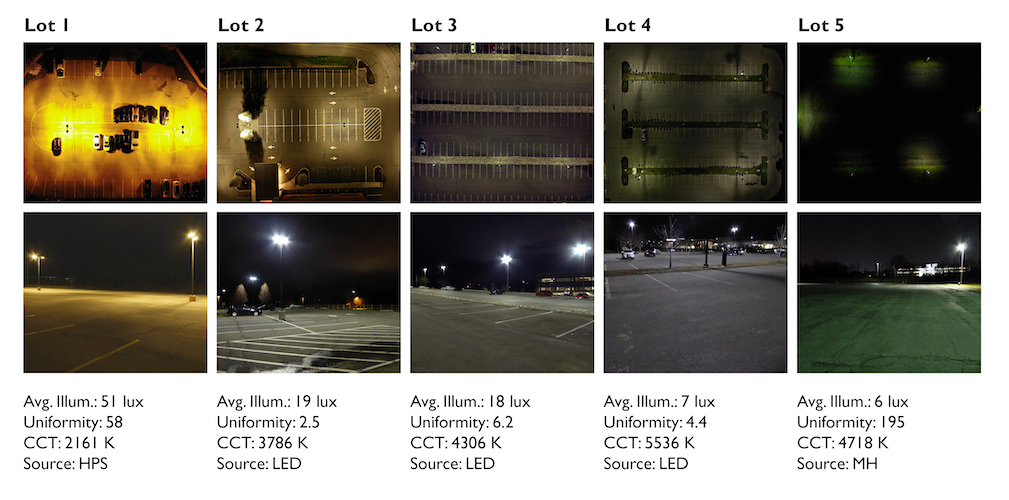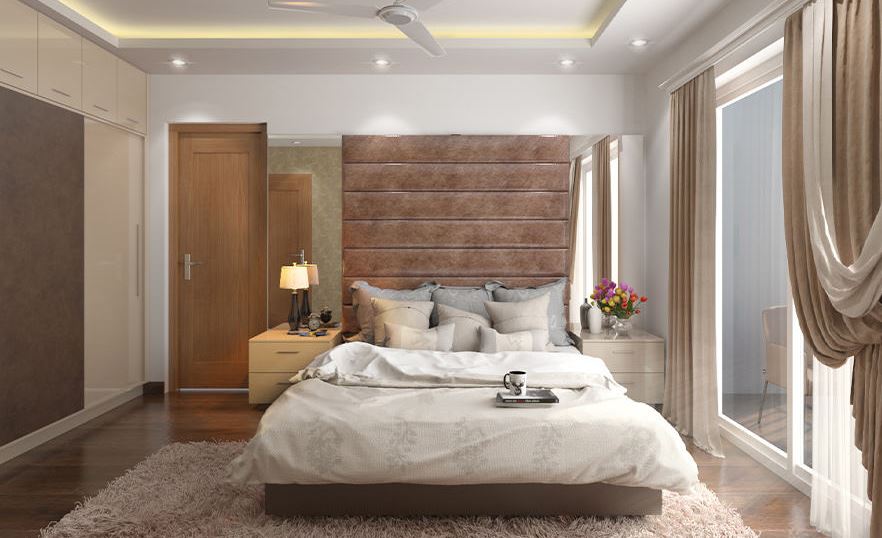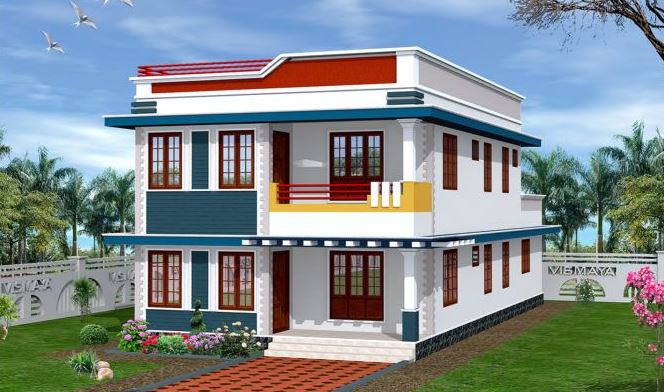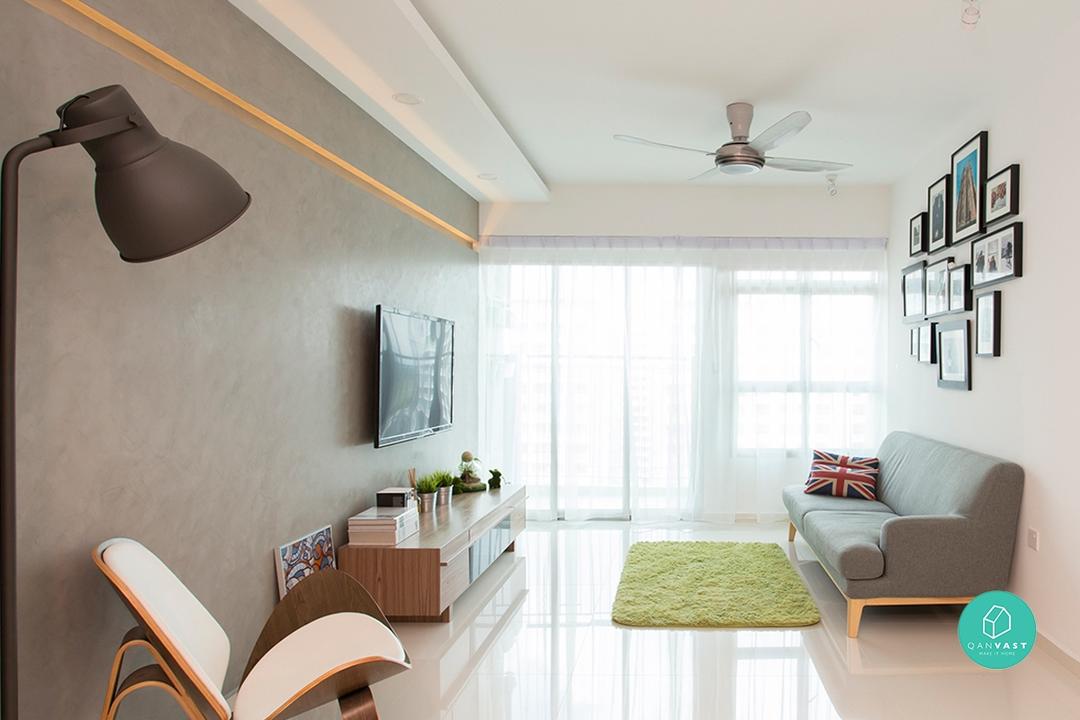Passive house is a revolutionary approach to building homes that prioritizes energy efficiency and sustainability. It’s not just about saving money on energy bills; it’s about creating healthier, more comfortable living spaces while minimizing our environmental impact. This guide delves into the fascinating world of passive house design, construction, and performance, exploring the key principles and technologies behind these remarkable structures.
From the crucial role of airtightness to the innovative use of solar gain, we’ll explore the various design features and construction methods that make a passive house tick. We’ll also investigate the performance aspects, including energy consumption and cost-effectiveness, to gain a complete picture of this exciting building approach.
Defining Passive House
A Passive House is a highly energy-efficient building designed to minimize energy consumption for heating and cooling. Its core principles revolve around minimizing energy use, rather than relying on large-scale mechanical systems. This approach not only reduces operational costs but also significantly lowers the building’s environmental footprint.The primary goal is to create a building that requires minimal energy input to maintain a comfortable indoor temperature year-round.
This is achieved through meticulous attention to thermal insulation, airtightness, and renewable energy sources.
Key Principles of Passive House Design
The design of a Passive House is built upon several core principles. These principles are crucial to achieving the building’s energy-efficiency goals. They include prioritizing airtight construction, high-performance insulation, and strategically placed windows to maximize solar gain. These elements work in concert to ensure minimal energy consumption.
Passive House Design Criteria
To achieve Passive House certification, specific criteria must be met. These criteria ensure that the building’s performance meets the standards set for energy efficiency and comfort. The standards for Passive House certification are meticulously detailed and involve strict requirements for thermal performance, airtightness, and renewable energy considerations. These include:
- Extremely low thermal transmittance: Buildings must demonstrate exceptional insulation, limiting heat loss or gain through walls, roofs, and windows.
- High air tightness: The building envelope must be virtually airtight, preventing air leakage, which is a significant source of energy loss. This typically involves using specialized airtight construction techniques and materials.
- High-performance windows: Windows are designed to minimize heat transfer and maximize solar heat gain in winter while preventing overheating in summer. Low-emissivity coatings and advanced window frames are crucial components.
- Strategic solar gains: Building orientation and window placement are carefully considered to maximize the use of solar energy for heating during winter months.
- Ventilation strategy: Mechanical or natural ventilation systems are implemented to maintain indoor air quality and regulate humidity, while also minimizing energy consumption.
Passive House Construction Techniques
Passive House construction utilizes a range of techniques to achieve the required performance levels. These techniques often involve specialized materials and construction methods:
- Super-insulation: Thick layers of high-performance insulation, such as cellulose or mineral wool, are used to drastically reduce thermal bridging and heat transfer.
- Airtight construction: Specialized sealing techniques, such as tape and sealant applications, are employed to minimize air infiltration. This includes meticulous attention to all connections and penetrations.
- High-performance windows: Triple-pane windows with low-emissivity coatings and advanced frames are frequently used to minimize heat loss and gain.
- Thermal bridges: Careful consideration and mitigation of thermal bridges, which are areas where heat can easily transfer, are essential to maintain the overall efficiency of the structure.
Comparison with Traditional Construction
The following table highlights key differences between Passive House construction and traditional construction methods.
| Feature | Passive House | Traditional Construction |
|---|---|---|
| Energy Efficiency | Extremely high, aiming for near-zero energy consumption. | Generally lower, relying on heating and cooling systems. |
| Insulation | Superior insulation levels. | Typically lower insulation levels. |
| Airtightness | Virtually airtight construction. | Potentially significant air leakage. |
| Windows | High-performance, low-emissivity windows. | Standard windows with varying performance. |
| Construction Cost | Potentially higher initial cost, but long-term savings are significant. | Lower initial cost, but higher operational costs over time. |
Environmental Benefits of Passive House Design
Passive House design significantly contributes to environmental sustainability. By drastically reducing energy consumption, these buildings minimize greenhouse gas emissions and promote a healthier environment. They also reduce the need for fossil fuels for heating and cooling, contributing to a lower carbon footprint.
Passive House Design Features
Passive House design prioritizes energy efficiency through meticulous attention to building envelope characteristics and smart strategies. This approach dramatically reduces heating and cooling needs, leading to significant long-term cost savings and a smaller environmental footprint. By focusing on minimizing energy consumption, Passive Houses contribute to a sustainable building practice.Passive House design is not just about using fancy materials; it’s about strategically integrating various components to create a highly insulated and airtight building.
This integrated approach minimizes heat loss and gain, which directly impacts energy efficiency. This design methodology involves meticulous planning and execution from the initial design phase to the final construction.
Airtightness
Airtightness is crucial in a Passive House, preventing air leakage that would otherwise lead to significant heat loss or gain. A well-sealed building envelope significantly reduces the need for heating and cooling systems. This is achieved through careful construction techniques, including sealing all penetrations (pipes, wires, etc.) and using specialized airtight building materials. A typical Passive House aims for an air leakage rate of less than 0.6 air changes per hour (ACH) at 50 Pa.
This exceptional airtightness creates a more comfortable indoor environment, reducing drafts and improving indoor air quality.
High-Performance Windows and Doors
High-performance windows and doors play a vital role in Passive House design. These windows and doors are carefully selected for their thermal performance, minimizing heat transfer. They often include triple or quadruple glazing, low-emissivity coatings, and advanced frames. Properly installed windows and doors, combined with an airtight envelope, dramatically reduce heat loss and gain, thus reducing reliance on heating and cooling systems.
Proper consideration of window placement and orientation is crucial for maximizing solar gain and minimizing heat loss.
Thermal Mass
Thermal mass is a significant design element in Passive Houses. Materials like concrete, stone, or brick, with high thermal mass, absorb heat from the sun during the day and release it at night, regulating indoor temperature. This passive temperature control helps to minimize the need for active heating and cooling systems. The effective use of thermal mass can also improve comfort by reducing temperature fluctuations.
For instance, a well-designed concrete floor can absorb heat during the day and release it gradually at night.
Passive House Design Strategies
- Insulation: High-performance insulation is critical for minimizing heat loss. Using various types of insulation, such as cellulose, fiberglass, or mineral wool, ensures the building envelope is properly insulated. This insulation significantly reduces heat transfer through the walls, roof, and floor.
- Orientation and Shading: The orientation of the building and the use of shading devices (awnings, overhangs) are important in controlling solar gain. Strategically placing windows to maximize solar gain in winter and minimize it in summer significantly reduces energy consumption. The use of overhangs can provide shade during the summer months, keeping the building cooler and reducing cooling needs.
- Ventilation: Passive Houses utilize a controlled ventilation system to remove moisture and maintain indoor air quality. These systems are designed to ensure fresh air is brought into the home while minimizing heat loss. This often involves the use of heat recovery ventilation (HRV) systems that recover heat from exhaust air and use it to preheat incoming air.
Passive houses are all about energy efficiency, aiming for minimal energy use. But you can still have a luxurious lifestyle in a house like that, think Luxury lifestyle house with all the modern comforts, but with a much smaller carbon footprint. Ultimately, a passive house offers a sustainable luxury experience.
Solar Gain Integration
Solar gain is actively integrated into Passive House design to maximize free heat during winter months. Strategically placed windows, optimized for solar radiation, collect and transfer solar energy into the building. This reduces the building’s reliance on artificial heating systems. Passive House design incorporates precise calculations to determine the ideal window placement and size to ensure maximum solar gain in the winter months while minimizing it during the summer.
Passive houses are all about energy efficiency, which often means minimizing the need for a lot of extra systems. However, integrating a home automation system can actually enhance the passive house concept, automating tasks like lighting and temperature control for optimal energy use and comfort. This makes the passive house experience even more enjoyable and efficient.
Passive House Design Strategies Table
| Strategy | Description | Impact |
|---|---|---|
| High-Performance Insulation | Utilizing high-density insulation materials to minimize heat transfer through building envelope. | Reduces heating and cooling loads. |
| Airtight Building Envelope | Minimizing air leakage to maintain consistent indoor temperature. | Reduces energy loss and gain, improving comfort. |
| Proper Window Placement and Orientation | Strategic placement of windows to maximize solar gain in winter and minimize it in summer. | Reduces heating and cooling demands. |
| Thermal Mass | Utilizing materials with high thermal mass to regulate indoor temperature. | Reduces temperature fluctuations and minimizes the need for active heating/cooling. |
Passive House Construction
Building a Passive House is a meticulous process that prioritizes energy efficiency from the ground up. The goal is to minimize energy consumption by focusing on airtight construction, high-performance insulation, and optimized window systems. This results in significantly lower energy bills and a smaller carbon footprint compared to traditional homes.The construction of a Passive House differs fundamentally from traditional methods, emphasizing airtightness and thermal insulation to achieve the energy-efficient standards required.
This requires a careful selection of materials and precise execution of construction techniques. Furthermore, rigorous quality control measures are essential to maintain the intended performance levels.
Materials Used in Passive House Construction
The selection of materials plays a crucial role in achieving the energy-efficient performance of a Passive House. Materials must be carefully chosen for their thermal performance, air tightness properties, and durability. Common materials include:
- Insulation: High-performance insulation, often made of cellulose fiber, mineral wool, or rigid foam, is crucial for minimizing heat transfer. These materials are carefully installed to ensure complete coverage and prevent thermal bridging.
- Windows: Triple-glazed, high-performance windows are essential to limit heat loss and gain. These windows are often custom-designed to meet the specific needs of the Passive House design.
- Airtightness Membranes: Specialized membranes are used to create an airtight building envelope. This includes materials like Tyvek or similar products for the exterior walls and vapor barriers within the interior walls.
- Exterior Materials: Materials like insulated concrete forms (ICFs), structural insulated panels (SIPs), or timber frame construction are frequently used for the structural components of Passive Houses. These choices often contribute to both the structural integrity and thermal performance of the building.
Achieving Airtightness
Creating an airtight building envelope is paramount to a Passive House’s energy efficiency. Air leakage acts as a significant source of heat loss and gain. Achieving airtightness requires a meticulous approach throughout the construction process:
- Detailed Plans: Accurate and comprehensive plans are crucial to guide the installation of insulation and membranes, minimizing potential air leaks.
- Careful Installation: The proper sealing of joints, penetrations, and connections is essential. This involves using specialized tools and techniques to ensure a complete seal.
- Testing and Evaluation: Rigorous air leakage testing is performed to ensure that the building envelope meets the stringent standards. This often involves measuring the air exchange rate (ACH50) to quantify the air tightness.
Quality Control in Passive House Construction
Maintaining consistent quality control is vital to ensure that the Passive House meets the required performance standards. A dedicated quality control plan should be established from the beginning of the project and consistently monitored throughout the construction process.
- Trained Professionals: Hiring qualified and experienced contractors is essential. These professionals must be familiar with the specific techniques and materials required for Passive House construction.
- Regular Inspections: Regular inspections are crucial to identify and rectify any potential issues early in the process. This ensures that the project adheres to the Passive House standards.
- Documentation: Thorough documentation of the construction process and material choices is important for future reference and troubleshooting.
Examples of Passive House Construction Projects
Numerous projects worldwide demonstrate the feasibility and benefits of Passive House construction. These projects showcase a range of architectural styles and demonstrate the adaptable nature of Passive House design.
- Passive House Communities: Several communities have embraced Passive House construction, showcasing the potential for large-scale implementation.
- Residential Buildings: Numerous residential buildings worldwide have been constructed using Passive House principles, demonstrating the practical application of the methodology.
Different Construction Methods
Various construction methods can be employed for Passive House projects, each with its advantages and disadvantages.
| Construction Method | Advantages | Disadvantages |
|---|---|---|
| Structural Insulated Panels (SIPs) | Faster construction time, high insulation values | Potential for higher material costs, specific skillset needed |
| Insulated Concrete Forms (ICFs) | High strength, good thermal mass | Slower construction process, potential for higher material costs |
| Timber Frame | Sustainable material choice, good thermal performance | Potential for higher labor costs in some regions |
Passive House Performance
Passive House construction prioritizes energy efficiency, resulting in significantly lower energy bills and a smaller environmental footprint. This approach dramatically impacts the building’s performance, making it a compelling alternative to traditional construction methods.The core of Passive House performance lies in its design and construction techniques, which aim to minimize energy consumption. This translates to substantial long-term cost savings for homeowners, driven by lower utility bills and the building’s overall resilience.
Typical Energy Performance
Passive Houses are renowned for their exceptionally low energy consumption. They achieve this through meticulous design and construction, minimizing heat loss and gain. On average, Passive Houses use 80-90% less energy than standard buildings for heating and cooling, leading to remarkable cost savings over the lifetime of the home. The precise energy use varies based on factors like climate and specific design choices.
Cost-Effectiveness Over Time
The initial investment for a Passive House might be slightly higher than for a conventional home, but the long-term cost-effectiveness is substantial. Lower energy bills over the years offset the initial cost difference, making Passive Houses a financially sound investment. Many homeowners see a return on their investment within a few years due to the considerable savings on utility costs.
For example, a homeowner in a region with high energy prices could see their utility bills reduced by 70-80% compared to a similar traditional home.
Reducing Energy Consumption
Passive House construction utilizes several strategies to reduce energy consumption:
- High-performance insulation: Thick layers of insulation minimize heat transfer, reducing the need for significant heating and cooling.
- Airtight construction: Tight sealing prevents air leakage, which is a significant source of heat loss. This airtightness dramatically reduces the building’s thermal bridging.
- Solar gains: Strategic design incorporates solar gains to minimize heating requirements during colder months, while also considering the sun’s position to avoid overheating during warmer months. This means the home will use less energy to maintain a comfortable temperature.
- Heat recovery ventilation (HRV): This system recovers heat from the outgoing air and transfers it to the incoming air, minimizing energy waste. This effectively maintains a healthy indoor environment.
These strategies, working in concert, contribute to the remarkable energy efficiency of a Passive House.
Factors Affecting Performance
Several factors influence the performance of a Passive House:
- Climate: Regional climate significantly impacts the energy requirements for heating and cooling. Houses in colder climates may require more robust insulation and heating systems than those in warmer climates.
- Design features: Specific design choices, such as window orientation and size, play a crucial role in managing solar heat gains and losses. Optimizing these aspects can significantly impact the house’s energy performance.
- Construction quality: The meticulous execution of construction techniques directly affects the building’s airtightness and insulation effectiveness. Precise craftsmanship is critical to achieving the Passive House standard.
Potential Cost Savings
The potential cost savings associated with Passive House construction are significant. Lower energy bills translate to substantial long-term savings, and these savings often exceed the initial investment difference. Reduced energy consumption also contributes to a smaller carbon footprint, supporting sustainability. Furthermore, the improved indoor comfort and health associated with Passive House construction can lead to long-term health benefits for residents.
Passive houses are all about energy efficiency, right? Well, a lot of the sleek, modern designs you see in urban areas like Urban modern home are starting to incorporate those same principles. It’s a cool blend of stylish living and sustainable building practices, and it really highlights the potential of passive house technology in modern urban settings.
Typical Energy Consumption Comparison
| Feature | Passive House | Traditional Home |
|---|---|---|
| Annual Heating Energy Consumption (kWh) | ~1000-2000 | ~8000-12000 |
| Annual Cooling Energy Consumption (kWh) | ~500-1000 | ~2000-3000 |
| Total Annual Energy Consumption (kWh) | ~1500-3000 | ~10000-15000 |
Note: Values are approximate and can vary depending on factors like climate and building size.
Passive House Technologies
Passive House construction relies heavily on a suite of technologies designed to minimize energy consumption and maximize comfort. These technologies work in concert to achieve the stringent performance standards of a Passive House, resulting in significantly lower operational costs and a smaller environmental footprint. This section delves into the key technologies employed, highlighting their functions and practical applications.
Heat Recovery Ventilators (HRVs)
Heat recovery ventilators are crucial components in Passive House design. They ensure a continuous supply of fresh air while minimizing heat loss. These systems effectively recover heat from exhaust air and transfer it to incoming fresh air, significantly reducing the energy needed for heating or cooling. This is a vital aspect of maintaining indoor air quality and thermal comfort while minimizing energy use.
A typical HRV system comprises a fan, heat exchanger, and filters. The heat exchanger plays a critical role in transferring heat from outgoing air to incoming air, reducing the amount of energy required to maintain a comfortable temperature.
Solar Thermal Collectors
Solar thermal collectors are used to preheat domestic hot water and sometimes even contribute to space heating. By utilizing solar energy, these systems reduce the reliance on conventional heating sources. The efficiency of solar thermal collectors is influenced by factors such as solar irradiance, collector orientation, and water flow rate. For example, a south-facing system optimally positioned to maximize solar exposure will yield greater heating capacity compared to a system with limited sun exposure.
Innovative Passive House Technologies
Several innovative technologies are pushing the boundaries of Passive House design. These include advanced insulation materials, high-performance windows, and airtight building envelopes. These technologies, when combined with rigorous design principles, allow for the construction of highly efficient and comfortable homes. For example, vacuum insulation panels (VIPs) are becoming increasingly popular due to their exceptional thermal performance and lightweight nature.
This allows for significant reductions in energy use for heating and cooling, further enhancing the Passive House’s overall efficiency.
Building Automation Systems (BAS)
Building automation systems (BAS) play a crucial role in optimizing Passive House performance. These systems can monitor and control various aspects of the building, such as temperature, humidity, and ventilation. By automating these processes, BAS ensure optimal comfort and energy efficiency. Real-time data analysis allows for the adjustment of systems in response to changing conditions, maximizing energy savings and comfort.
Table of Passive House Technologies
| Technology | Description |
|---|---|
| Heat Recovery Ventilators (HRVs) | Continuously supply fresh air while minimizing heat loss. Recover heat from exhaust air and transfer it to incoming fresh air. |
| Solar Thermal Collectors | Utilize solar energy to preheat domestic hot water and sometimes contribute to space heating, reducing reliance on conventional sources. |
| Advanced Insulation Materials | Materials with superior thermal performance, significantly reducing heat loss and gain. |
| High-Performance Windows | Windows with low U-values and high solar heat gain coefficients, maximizing energy efficiency and daylighting. |
| Airtight Building Envelopes | Minimizes air leakage, ensuring consistent indoor climate and energy efficiency. |
| Vacuum Insulation Panels (VIPs) | Excellent thermal performance and lightweight nature, reducing energy use for heating and cooling. |
| Building Automation Systems (BAS) | Monitor and control various building aspects (temperature, humidity, ventilation). Automate processes for optimal comfort and energy efficiency. |
Passive House in Different Climates
Passive House design principles, while rooted in energy efficiency, are remarkably adaptable to diverse climates. The key lies in tailoring the design elements to the specific thermal characteristics of a region, maximizing comfort and minimizing energy consumption. This adaptability ensures that Passive House buildings can thrive in a wide range of environments, from frigid winters to sweltering summers.The successful implementation of Passive House principles in various climates depends on understanding and addressing the unique thermal challenges of each region.
Strategies for optimizing insulation, airtightness, and natural ventilation, for example, must be adjusted to account for factors like solar radiation, wind patterns, and humidity levels. This tailored approach ensures the buildings remain comfortable and energy-efficient while adhering to the Passive House standard.
Adapting Passive House Design to Various Climates
Passive House design principles are remarkably adaptable. The crucial elements—insulation, airtightness, and optimized heat recovery—remain constant, but their application differs significantly across climates. This involves carefully considering factors like solar gain, wind loads, and humidity levels.
Optimizing Passive House Design for Cold Climates
For regions with harsh winters, strategies for optimizing Passive House design focus on minimizing heat loss. This involves using high-performance insulation, airtight construction techniques, and maximizing solar gains in winter. Strategic placement of windows facing south to capture winter sunlight is crucial. The design should also incorporate efficient ventilation systems to prevent moisture buildup, which can damage insulation and reduce its effectiveness.
High-performance windows are also vital in reducing heat loss. Thermal mass, like stone or concrete walls, can effectively absorb and release heat, helping to regulate temperature fluctuations. Examples of successful Passive House projects in cold climates demonstrate the effectiveness of these strategies.
Passive houses are all about energy efficiency, right? Well, a lot of inspiration for modern design elements can come from places like coastal areas. For example, designers often look to the clever use of natural light and ventilation in Coastal modern house designs, which can then be adapted to the principles of passive house construction to make super energy-efficient homes.
Ultimately, passive house design is about thoughtful, sustainable construction.
Adapting Passive House Design for Hot and Humid Climates
In hot and humid climates, the primary focus is on mitigating heat gain and controlling humidity. This necessitates using appropriate insulation and airtight construction techniques to prevent heat transfer. Strategic shading devices, such as overhangs and external awnings, are vital to reduce solar heat gain. Passive cooling techniques, like natural ventilation, cross ventilation, and evaporative cooling, play a critical role in maintaining thermal comfort.
Proper moisture management is crucial to prevent condensation and mold growth, which can compromise the building’s performance. A well-designed Passive House in these climates integrates these techniques to ensure comfort and energy efficiency throughout the year.
Examples of Passive House Projects in Different Climates
Passive House projects are successfully implemented globally. Examples in colder regions, such as northern Europe, showcase the effectiveness of high-performance insulation and airtight construction in minimizing heat loss. Conversely, Passive House projects in warmer regions, such as the Mediterranean, demonstrate how natural ventilation and shading strategies can mitigate heat gain.
Comparison of Passive House Designs for Various Climates
| Climate Zone | Key Design Strategies | Challenges | Opportunities |
|---|---|---|---|
| Cold | High-performance insulation, airtight construction, maximizing winter solar gain, thermal mass | Potential for higher initial construction costs, need for efficient heating systems | Significant energy savings, high comfort levels in cold conditions |
| Hot and Humid | Natural ventilation, shading devices, evaporative cooling, proper moisture management | Maintaining thermal comfort during hot and humid periods, challenges with condensation | Reduced reliance on mechanical cooling, improved indoor air quality |
| Temperate | Balancing heat gain and loss, adaptable insulation strategies, natural ventilation | Moderate challenges in both heat gain and loss | Potential for substantial energy savings with strategic design |
Passive House Case Studies
Passive House projects offer valuable insights into the real-world application and performance of these energy-efficient buildings. Analyzing successful and challenging projects helps refine design strategies and construction techniques. Understanding long-term performance and environmental impact provides further evidence of Passive House’s viability and benefits.
A Detailed Description of a Real-World Passive House Project
The Passive House project at the University of Washington, Seattle, exemplifies the design and construction strategies of a Passive House. This project utilized advanced insulation techniques, triple-glazed windows, and airtight construction to achieve extremely low energy consumption. The building’s orientation and design optimized solar gains and minimized heat loss, further enhancing its energy efficiency.
Challenges and Successes of a Particular Passive House Project
One common challenge in Passive House construction is achieving airtightness. Precision in sealing all penetrations, including pipes and wires, is crucial. This project, for instance, faced difficulties in achieving the necessary airtightness standards during the initial construction phase. However, the project’s success stemmed from meticulous attention to detail, rigorous testing, and the incorporation of advanced airtightness techniques.
The project also demonstrated the viability of using renewable energy sources, such as solar panels, to further reduce the building’s carbon footprint.
Long-Term Performance of a Passive House Project
Long-term monitoring of Passive House projects provides valuable data on their energy performance over time. Studies have shown that Passive Houses consistently maintain their energy efficiency throughout their lifespan. The reduced energy consumption translates into lower utility bills for occupants, contributing to significant cost savings over the building’s lifetime.
Environmental Impact of a Passive House Project
Passive House projects demonstrate a significantly reduced environmental impact compared to conventional buildings. By minimizing energy consumption, these projects contribute to lower carbon emissions and reduced reliance on fossil fuels. The reduced demand for energy translates to a smaller carbon footprint throughout the building’s lifecycle, from construction to operation. This project’s environmental impact was assessed by calculating the embodied carbon in the building materials and the operational energy use over a 50-year period.
Passive houses are all about efficiency, and that extends to the interior design. Using textured finishes, like those found on Textured finishes , can add visual interest without sacrificing the building’s airtightness. This attention to detail is crucial for maintaining a passive house’s low energy consumption.
The findings indicated a substantial reduction in carbon emissions compared to a typical building.
Passive House Case Studies Table
| Project Name | Location | Key Features | Challenges | Successes |
|---|---|---|---|---|
| University of Washington, Seattle | Seattle, WA | Advanced insulation, triple-glazed windows, airtight construction | Achieving airtightness | Reduced energy consumption, renewable energy integration |
| Example Passive House in Germany | Munich, Germany | High-performance glazing, optimized orientation | High material costs | Demonstrated long-term energy efficiency |
| Passive House Residence in Austria | Vienna, Austria | Innovative construction techniques | Unexpected weather conditions | Excellent thermal comfort |
Positive Social Impact of Passive House Design
Passive House design often leads to increased occupant comfort and well-being. The constant thermal comfort and reduced energy bills can positively impact residents’ quality of life. Moreover, Passive House design often emphasizes natural light and ventilation, creating healthier and more comfortable living spaces. The positive social impact is also seen in the creation of jobs in the green building sector.
This project, for example, fostered partnerships with local businesses, creating employment opportunities in the sustainable construction industry.
Last Point
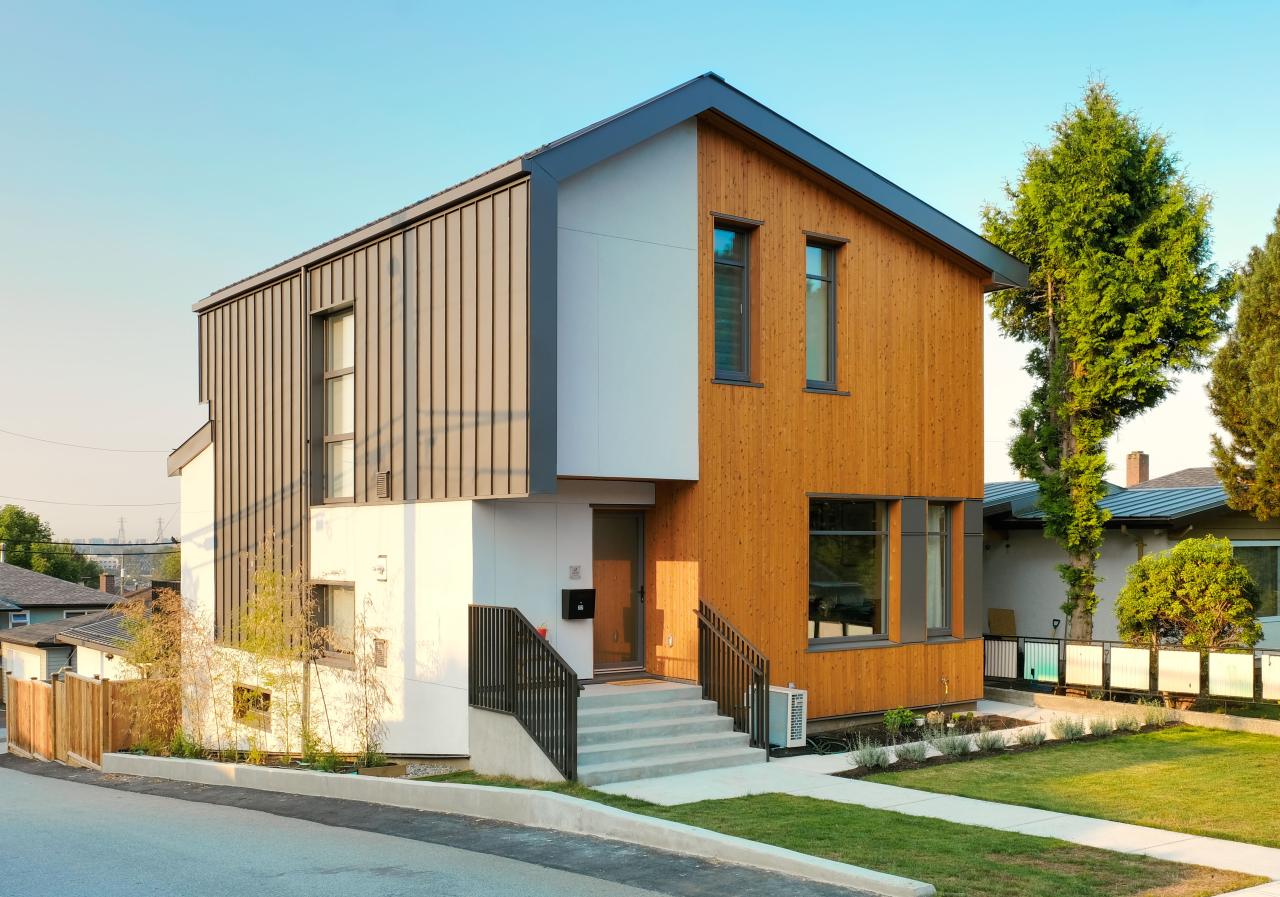
Source: passivehousecanada.com
In conclusion, passive house represents a significant step forward in sustainable building practices. By combining advanced design, meticulous construction, and innovative technologies, passive homes demonstrate that energy efficiency and environmental responsibility can coexist with comfort and cost-effectiveness. We’ve explored the intricacies of passive house design, construction, and performance, offering a comprehensive overview of this exciting field.
Detailed FAQs
What are the typical energy savings of a Passive House compared to a traditional home?
Passive houses can achieve energy savings of up to 90% compared to conventional homes, drastically reducing energy consumption and utility bills.
What makes Passive House construction so expensive?
While the initial investment might seem higher, the long-term cost savings on energy bills usually outweigh the upfront investment, making it a financially sound choice in the long run. The high initial cost is often due to the specialized materials and techniques required for airtightness and insulation.
Are Passive House designs suitable for all climates?
Yes, passive house design principles can be adapted to various climates. Strategies are adjusted to maximize energy efficiency based on the region’s specific conditions, like the use of thermal mass for temperature regulation or optimized solar gain strategies.
What are some common challenges in building a Passive House?
Achieving the required airtightness and insulation levels can be challenging, requiring meticulous attention to detail throughout the construction process. Finding qualified contractors familiar with passive house techniques is also crucial.
- 17+ Aplikasi VCS Gratis Tanpa Koin APK VC Mod Acak Online - December 13, 2025
- TikTok Followers Gratis Paling Aman Tanpa Login & Password - December 13, 2025
- Cara Akses Konten Video yang Terblokir dengan Blockaway Proxy - December 13, 2025



